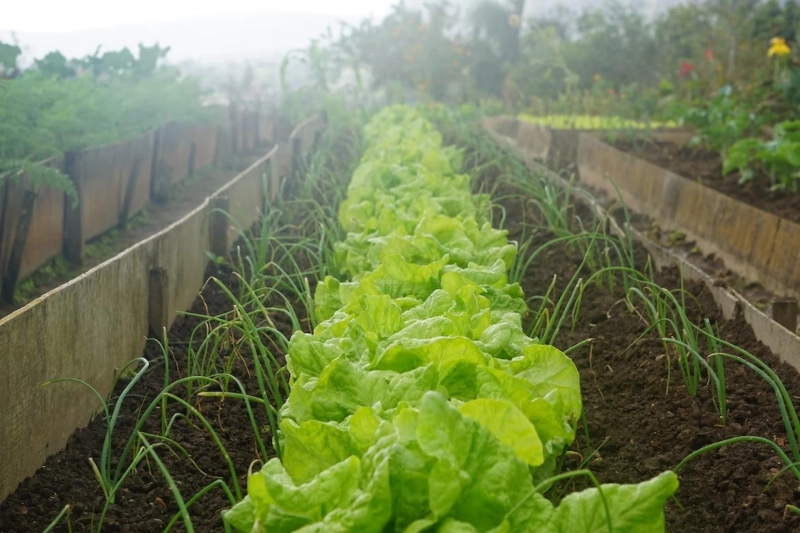Growing a vegetable garden is such a rewarding process. You can plant seeds in the ground one day and come back months later to find a vibrant garden ripe for the picking. Helping you spice up everything from stews and baked dinners to soups and tarts.
While this form of gardening is incredibly beneficial, it’s important to note that fresh and delicious vegetables won’t grow overnight. Instead, gardeners will need to employ everything from forward planning to garden maintenance to ensure a great yield.
This essentially means paying close attention to the vegetables you plant, their different varieties, and how they will cope in different garden arrangements and most importantly, different climates. This knowledge will give you a strong foundation to build upon.
Creating a thriving vegetable garden
The first step in the journey toward creating a thriving vegetable garden is choosing a growing location. Will you opt for hydroponic gardening? Is your garden big enough to house a vegetable patch on the lawn? Will you need to grow in planters on a balcony?
You might have a few locations in your outdoor area that could house a vegetable garden. It’s important to assess each space objectively. Does this spot receive enough sun, specifically, six to eight hours of direct sunlight?
Additionally, is this area of the garden prone to retaining water? If so, look for another location. If this isn’t feasible, think about different planting techniques such as planting in a raised row or raised garden bed.
Finally, the most important factor to consider is soil. The importance of soil cannot be overestimated as good soil forms the backbone of your garden. As such, good soil is routinely fertilised and tended to with organic matter in order to assist plants in the growing process.
The different vegetables to grow
There are hundreds of vegetables out there that are suited to growing in backyard garden conditions. However, before going crazy and buying a packet and after a packet of seeds, think about your plant selection.
It’s important to plant things that your family will actually like, otherwise your fresh crops will go to waste. Secondly, be realistic about how much your family will eat. Planting too much is just as wasteful as planting veggies that no one in your family likes to eat.
Carrots
Taking between 60 and 80 days to come to fruition, carrots will need an equal mix of loose soil, cool weather, and plenty of hydration. To achieve the perfect carrot crop, add mulch on top of the soil when they are starting to establish as this will help conserve water.
Tomatoes
There are different varieties of tomatoes from indeterminate to determinate. Indeterminate varieties will keep growing until the weather conditions become frosty. As for determinate tomatoes, the fruit will ripen relatively quickly.
Lettuce
Typically, lettuce is a plant that likes cool, moist conditions. With lettuce, it’s also important to note that it can be cut as they grow. This means that one single lettuce plant can yield several harvests.
Beans
Generally, prolific growers, and bean seeds can be placed directly into the ground. Pole bean varieties need both plenty of space and a trellis while bush beans can grow in smaller spaces. As beans can get tough, harvest as quickly as possible.
Herbs
Able to grow in both containers and garden beds, herbs are must-have additions purely because of how simple they are to grow. Think of everything from chives to sage and even thyme.
Cucumbers
Cucumber plants generally have large yields. As such, before planting, adapt the soil and add fertiliser that is high in both nitrogen and potassium. Cucumbers also love to climb so consider planting them next to another crop that can help act as a windbreaker.
Peas
Perfect for a hot meal on a winter’s night, peas actually prefer growing in cooler climates than warmer ones. Peas thrive when there is something to climb. Additionally, plant a few rows so you can make the most of this crop before the hot weather drives them out.
Garlic
Garlic is often one of the first vegetables harvested in spring. For proper planting, place cloves of bulbs in the ground with the pointy side up. Garlic crops will tell you when they are ready to be harvested and when their appearance begins to turn yellow.
Broccoli
Broccoli is a notorious cool weather plant. However, when planting broccoli in the early spring, make sure to check for signs of grubs such as cabbage worms. For ultimate protection, consider covering this crop with a floating cover.
Cabbage
Cabbages thrive in cool conditions. This means they experience great yields over autumn and winter and even the early months of spring. Packed with vitamins, cabbages will need a spot in the full sun and importantly, be planted in well-drained soil to prevent root rot.
Planting a vegetable garden
Curating a vegetable garden is a very involved process. Gardeners must choose the perfect location for their creation, cultivate ideal growing conditions and provide regular maintenance. However, all this effort is worth it when you bite into your first piece of fresh produce.


